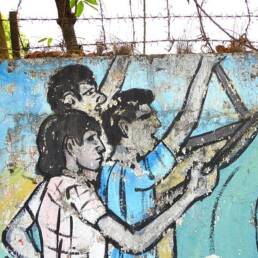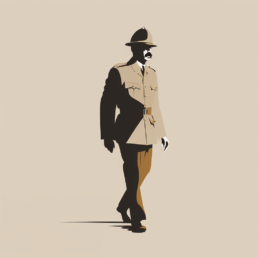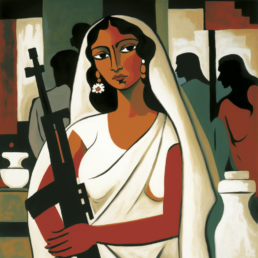Last week, as the national discourse became obsessed with the #Sengol, it made us think about the time when a fictional sceptre became a key element in a Tintin novel that was a satirical criticism of the fascist powers of Europe – a thread.
King Ottokar’s Sceptre – the eighth volume in Hergé’s Adventures of Tintin – was published between August of 1938 & 1939. These were tumultuous times in Europe. Fascism was on the rise like never before with Mussolini in Italy & Hitler in Germany.
Hergé was not oblivious to what was happening around him. In March, 1938, Hitler’s forces had marched into neighbouring Austria and occupied the country. Some years earlier, Hergé had used the backdrop of the Japanese invasion of China in the comic “The Blue Lotus”
It was thus not surprising that events unfolding much closer to home would find their way in his creation. Ottokar’s Sceptre was set in the fictional Balkan nation of Syldavia – where a nefarious plot was unfolding to dethrone King Muskar XII.
The conspirators planned to steal the sceptre of medieval king Ottokar IV before the traditional St. Vladimir’s Day festivities – thus forcing Muskar to abdicate. Tintin’s investigation reveals that the kingpin of the plot is Müsstler – leader of a Syldavian agitator group.
Tintin further finds that Müsstler is backed by Syldavia’s neighbour Borduria which intends to take advantage of Borduria’s political crisis and invade the nation.
Although the conspirators’ steal the sceptre, the intrepid reporter, helped by his faithful dog Snowy and the bumbling detective duo Thompson & Thomson, manages to retrieve the sceptre and return it to King Muskar just in time – thus foiling the nefarious plans.
It is not difficult to spot the similes in the story with events happening back then in Europe. Although situated in the Balkans, Borduria and Syldavia clearly mirror Germany and Austria. The big bad Müsstler’s name contains parts of Mussolini & Hitler – something Hergé himself confirmed in an interview later on.

The uniforms of the Bordurian officers were loosely inspired by those worn by the German SS and the Bordurian plane Tintin stole was also similarly modelled on German Heinkel He 112 (original version) and Messerschmitt Bf 109 (revised version). But there were several other contemporary allusions.
The agitators group that Müsstler ran was called the Iron Guard, influenced by the Romanian Iron Guard – a fascist Romanian revolutionary group that intended to overthrow king Carol II & bring Romania into an alliance with Nazi Germany.
And while Syldavia was located in the Balkans, fears of a German invasion of Belgium was clearly on Hergé’s mind – as evident in the physical resemblance of King Muskar XII to the reigning Belgian monarch Leopold III.
Hergé’s fears were to be proven true in May, 1940 when Germany invaded Belgium and also the Netherlands & Luxembourg. Belgium fell to the Germans after 18 days of fighting. Hergé & his wife were forced to flee to France.
The magazine Le Vingtième Siècle – whose children’s supplement Le Petit Vingtième carried the Tintin adventures – was forced to shut down. Hergé returned to Belgium after King Leopold’s appeal and joined Le Soir where he continued Tintin’s journey.
And in a chilling “real following fiction” development, Germany invaded Poland just weeks after Ottokar’s Sceptre completed release. King Ottokar’s Sceptre in addition to being an engaging read, remains a reminder of the importance of speaking up – overtly or covertly – in situations of moral crises.
Dante had famously written, “the darkest corners of hell are reserved for those who maintain their neutrality in times of moral crises.” In the times that we live in, we would do well to remember these lines.
Source
Tintin – Hergé and his Creation, Harry Thompson




